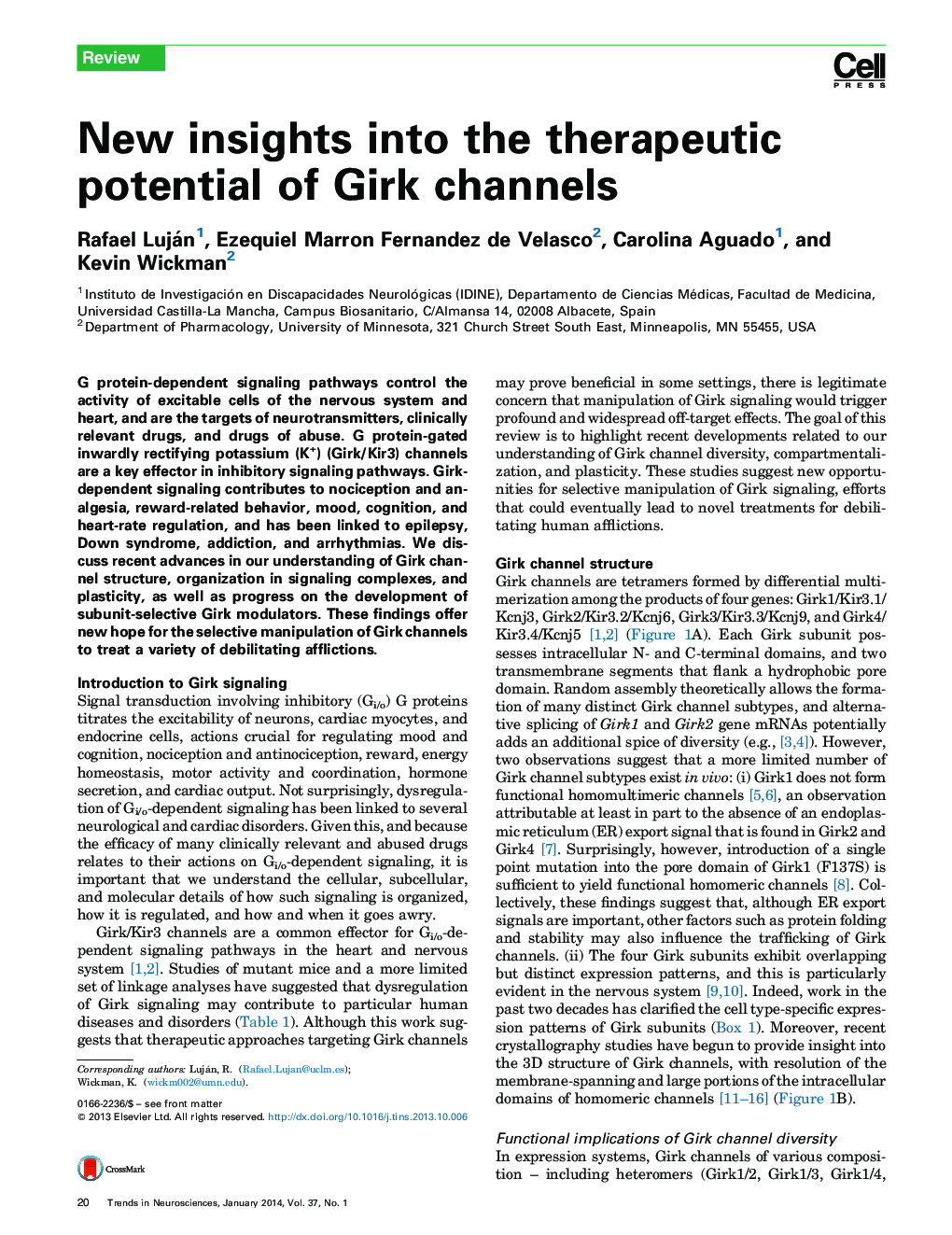| Article ID | Journal | Published Year | Pages | File Type |
|---|---|---|---|---|
| 6286723 | Trends in Neurosciences | 2014 | 10 Pages |
Abstract
G protein-dependent signaling pathways control the activity of excitable cells of the nervous system and heart, and are the targets of neurotransmitters, clinically relevant drugs, and drugs of abuse. G protein-gated inwardly rectifying potassium (K+) (Girk/Kir3) channels are a key effector in inhibitory signaling pathways. Girk-dependent signaling contributes to nociception and analgesia, reward-related behavior, mood, cognition, and heart-rate regulation, and has been linked to epilepsy, Down syndrome, addiction, and arrhythmias. We discuss recent advances in our understanding of Girk channel structure, organization in signaling complexes, and plasticity, as well as progress on the development of subunit-selective Girk modulators. These findings offer new hope for the selective manipulation of Girk channels to treat a variety of debilitating afflictions.
Related Topics
Life Sciences
Neuroscience
Neuroscience (General)
Authors
Rafael Luján, Ezequiel Marron Fernandez de Velasco, Carolina Aguado, Kevin Wickman,
